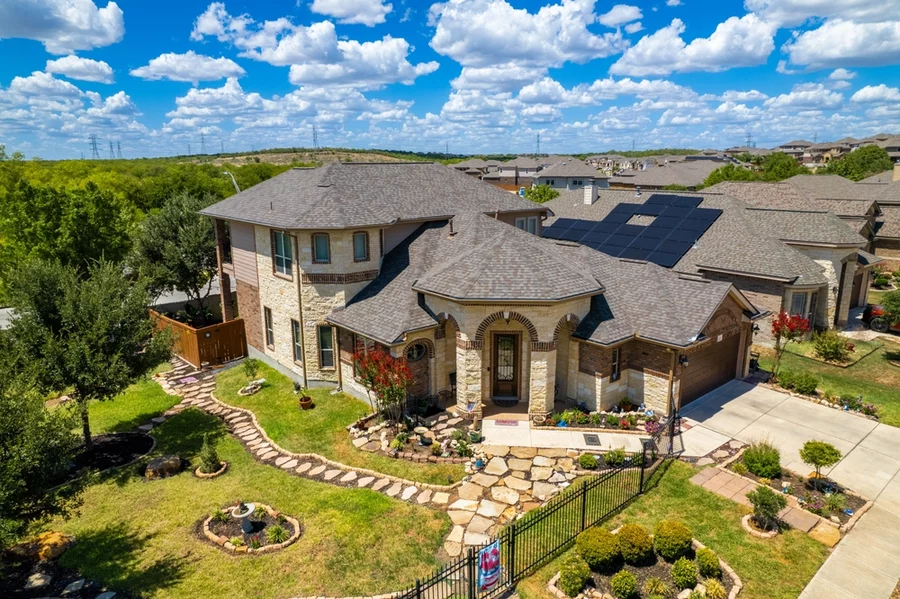So you need to replace your roof, and you’re wondering how long the new roof will last. What’s the best way to get the most attractive and good-looking roof, as well as ensure you won’t have to replace it again anytime soon? The answer depends on several factors, including the type of roofing material, local weather conditions, and how well the roof is maintained. What you decide to replace your roof with will generally determine the lifespan of the new roof, and it can vary by decades, almost a century in one case.
In Texas, where high heat, intense storms, and heavy rainfall are common, it’s especially important to consider durability and the long-term value of your investment. Here are some general lifespans based on the type of roof materials you use to make your new roof:
Roofing Material Options
The type of roofing material you select—combined with proper installation and consistent roof maintenance—has a major impact on your roof’s longevity. The better the quality of the roofing material, the longer you can expect your roof to last.
So let’s look at some of the different types of residential roofs you have to choose from:
Asphalt Shingles:
These are by far the most common form of shingles in the United States, but just because they’re common doesn’t mean there’s anything wrong with them. In fact, they’re common because they’re an all-around quality product. When properly installed and maintained, an asphalt shingle roof can last 20 to 30 years. Upgraded or architectural-grade shingles can last up to 40 years. They’re affordable, easy to repair, and ideal for the Texas climate.
Architectural Shingles:
These are called architectural shingles because, while they are attached and sealed in the same way as asphalt shingles, they have styles that mimic other kinds of roofs: wood, slate, or tile. They’re up to three times thicker than asphalt. The average lifespan of these shingles is around 30 to 40 years, depending on the quality of materials and weather exposure. Architectural shingles have the addition of a nice architectural look, which customers appreciate!
Wood Shingles:
Wood shingles, or “shakes,” are another option that is very attractive. Though they start with a clear wood finish (usually cedar), they gray in the weather and are very pleasing to look at, matching certain architectural styles of homes very well. They will last for approximately 30 years, but they do require a lot of upkeep: wood splits, cracks, and warps, and it won’t be long before a shake is out of place and needs replacing. Regular maintenance is key to maintaining your wood shingles.
Because of the high humidity and potential for water damage in Texas, frequent inspections and upkeep are essential to get the full life expectancy from a wood roof.
Clay Tiles:
Clay tile roofs are certainly indicative of a specific area: namely, the southwest and California. If you like the look of them, they’re a surprisingly long-lasting roof. Warranties will put these tiles anywhere between 30 years and a lifetime, and a good rule of thumb is that clay tile roofs will last for about 50 years.
They’re fire resistant, low maintenance, and durable—but also heavier than other materials, so your roof structure may need evaluation before installation.
Metal Roofs:
When buying a metal roof, you want to talk to your roofer about the quality of the material. Some metal roofs can be short-lived, while others are very long-lasting. A lot depends on the construction: the thicker the metal, the longer the life, and the type of material (aluminum or steel) also contributes. A standard aluminum roof will last 20–25 years, while a high-end standing seam metal roof can last over 50 years. They’re excellent for resisting wear and tear from wind, hail, and UV exposure, common in Texas.
Slate Tiles:
Slate roofs have been used for centuries–a stone tile that looks beautiful. They’re certainly high-quality, but seldom used because of the scarcity of the material–they’re a specialty item that is not commonly stocked at your local hardware store. But they’re very strong and very sturdy.
Warranties will be anywhere from 50 years to a lifetime. Though the tiles need to be replaced if they break, they don’t require quite the same upkeep as wooden shakes, and can easily be fixed. The big downside to slate can be the weight. Slate roofing is incredibly durable and fire resistant, and when properly installed, the life expectancy of a slate roof can easily exceed 75 years. However, due to its weight, you’ll need to ensure your roof deck is structurally sound.
When determining how long your roof will last, keep in mind that regular maintenance and inspections can significantly extend your roof’s life. Small roof repairs, replacing broken tiles, and addressing early signs of water damage can help you avoid a full roof replacement sooner than expected. Working with a qualified roofing contractor ensures that your roof is properly installed using high-quality materials, setting you up for the maximum possible roof life expectancy.

